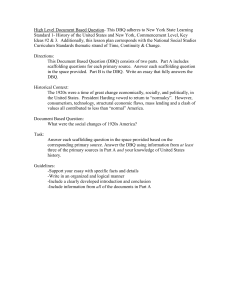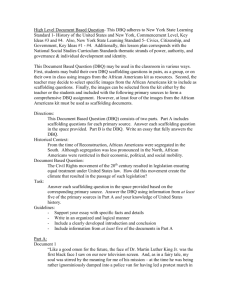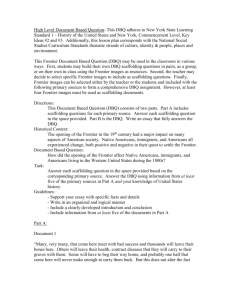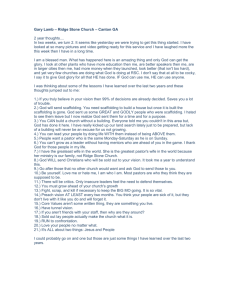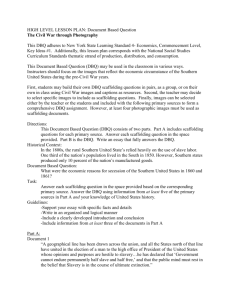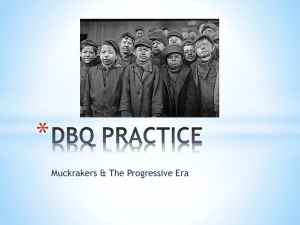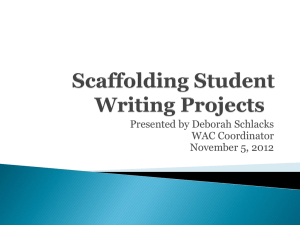High Level Document Based Question
advertisement
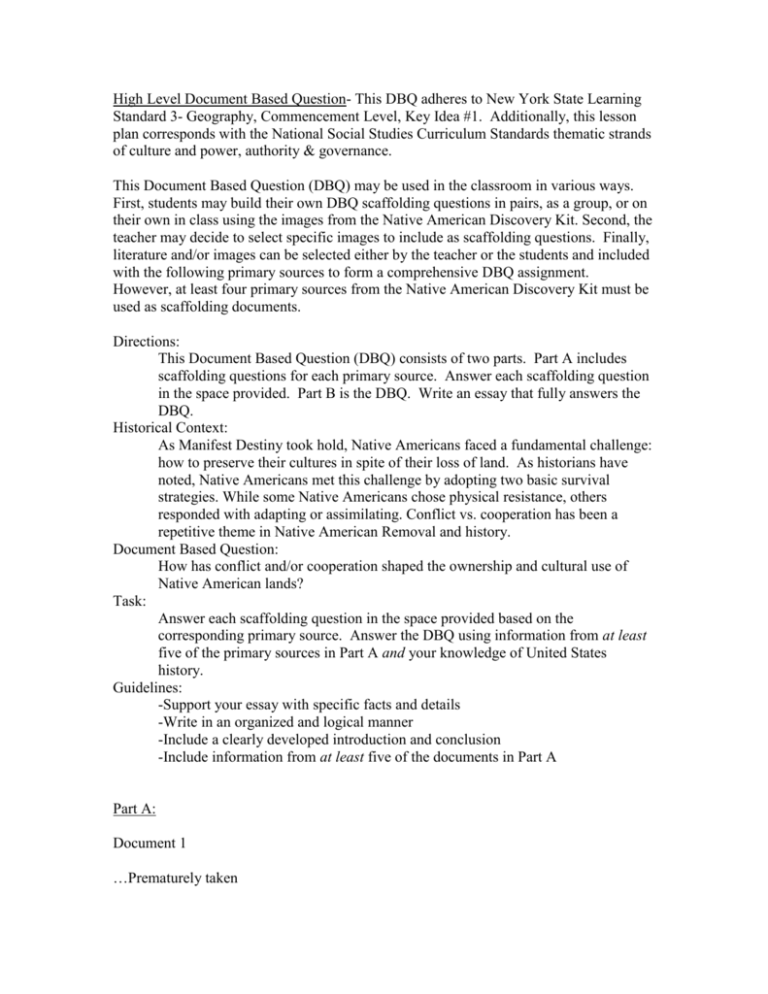
High Level Document Based Question- This DBQ adheres to New York State Learning Standard 3- Geography, Commencement Level, Key Idea #1. Additionally, this lesson plan corresponds with the National Social Studies Curriculum Standards thematic strands of culture and power, authority & governance. This Document Based Question (DBQ) may be used in the classroom in various ways. First, students may build their own DBQ scaffolding questions in pairs, as a group, or on their own in class using the images from the Native American Discovery Kit. Second, the teacher may decide to select specific images to include as scaffolding questions. Finally, literature and/or images can be selected either by the teacher or the students and included with the following primary sources to form a comprehensive DBQ assignment. However, at least four primary sources from the Native American Discovery Kit must be used as scaffolding documents. Directions: This Document Based Question (DBQ) consists of two parts. Part A includes scaffolding questions for each primary source. Answer each scaffolding question in the space provided. Part B is the DBQ. Write an essay that fully answers the DBQ. Historical Context: As Manifest Destiny took hold, Native Americans faced a fundamental challenge: how to preserve their cultures in spite of their loss of land. As historians have noted, Native Americans met this challenge by adopting two basic survival strategies. While some Native Americans chose physical resistance, others responded with adapting or assimilating. Conflict vs. cooperation has been a repetitive theme in Native American Removal and history. Document Based Question: How has conflict and/or cooperation shaped the ownership and cultural use of Native American lands? Task: Answer each scaffolding question in the space provided based on the corresponding primary source. Answer the DBQ using information from at least five of the primary sources in Part A and your knowledge of United States history. Guidelines: -Support your essay with specific facts and details -Write in an organized and logical manner -Include a clearly developed introduction and conclusion -Include information from at least five of the documents in Part A Part A: Document 1 …Prematurely taken from the woodland Giving birth to children that grew in a world that is white. Prematurely you put your hair up and covered it with a net. Prematurely grey they called it. Hair binding. Damming the flow. With no words, quietly the hair fell out formed webs on your dresser on your pillow in your brush. These tangled strands pushed to the back of a drawer wait for me. To untangle To comb through To weave together the split fibers and make a material Strong enough To encompass our lives. Beth Brant “For All My Grandmothers” from Mohawk Trail 1985 Scaffolding Question: What does the author mean by “prematurely taken from the woodland” and “these tangled strands…wait for me”? Document 2 “Upon descending into the valley of Cimarron, on the morning of the 19th of June, a band of Indians on horseback suddenly appeared before us from behind the ravines – an imposing array of death-dealing savages! There was no merriment in this! It was genuine alarm – a tangible reality. These warriors, however, as we soon discovered, were only the vanguard of a ‘countless host,’ who were by this time pouring over the opposite ridge”. Josiah Gregg Commerce of the Prairies 1831 Scaffolding Question: What is this Westward Bound traveler’s opinion of Native Americans? Document 3 “If any man or any nation outside the Five Nations shall obey the laws of the Great Peace and make known their disposition to the Lords of the Confederacy, they may trace the Roots to the Tree and if their minds are clean and they are obedient and promise to obey the wishes of the Confederate Council, they shall be welcomed to take shelter beneath the Tree of Long Leaves”. Iroquois The Great Binding Law of the League of the Iroquois 1500s Scaffolding Question: What is required under Iroquois Law to be welcomed on their land? Document 4 Scaffolding Question: Where and to what extent did colonial settlers encroach on Native American lands?
